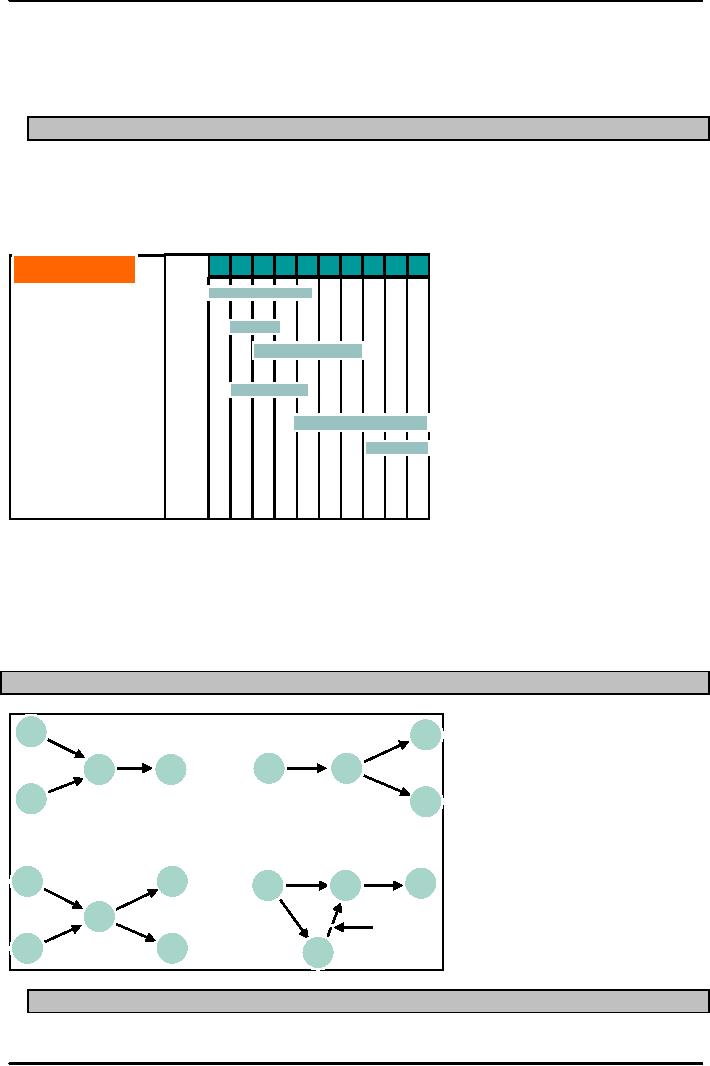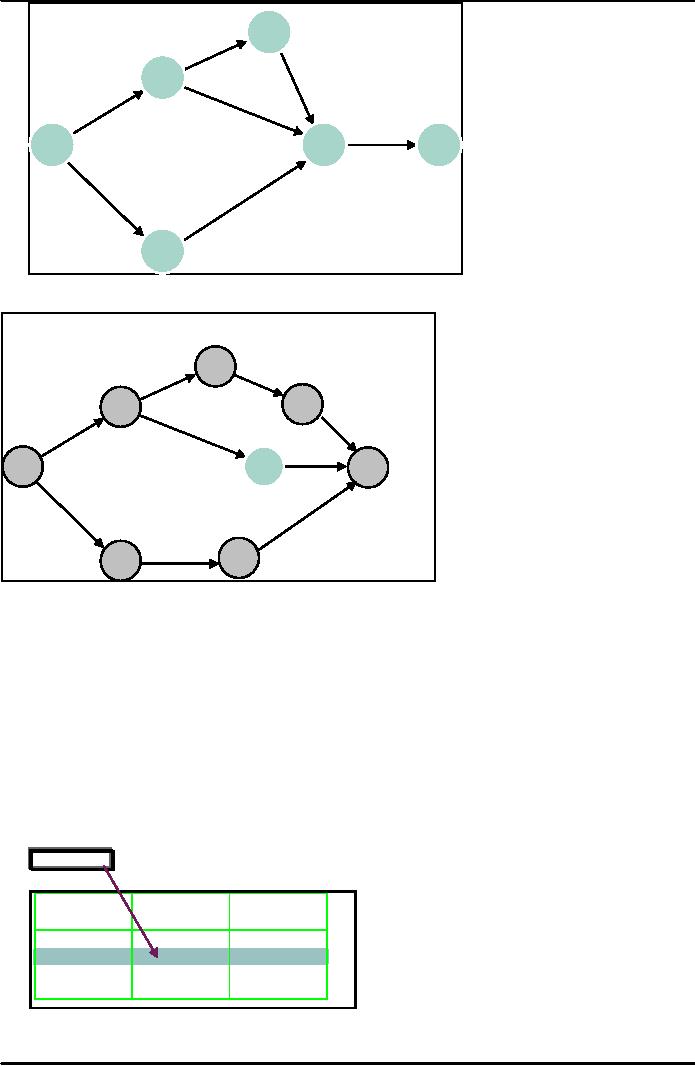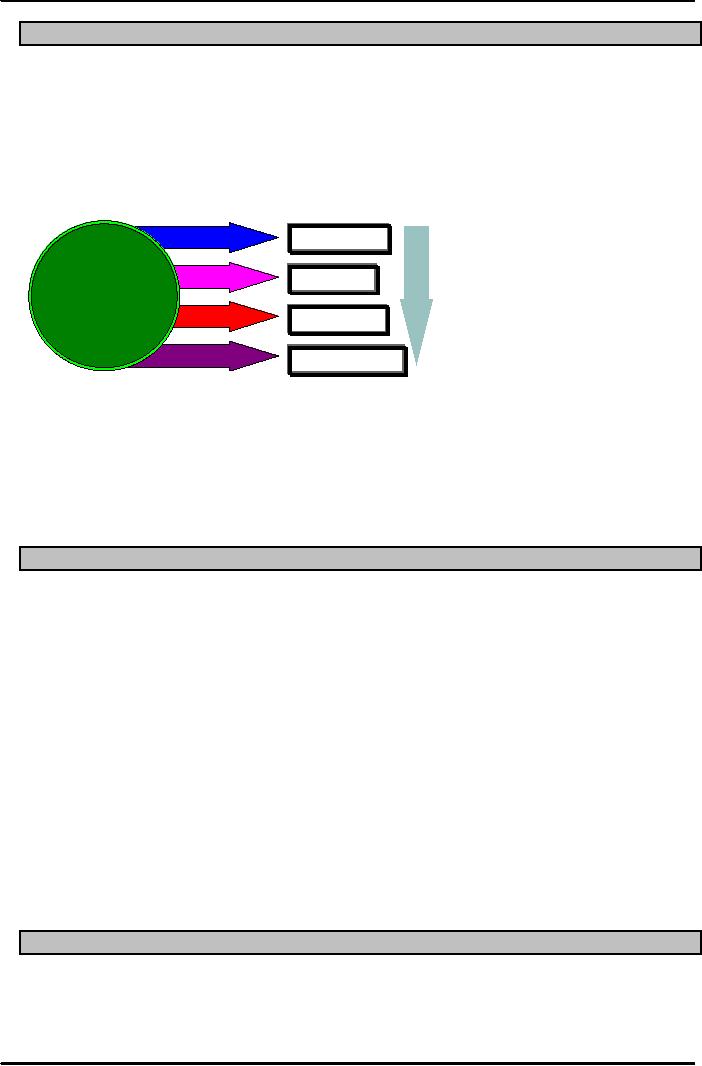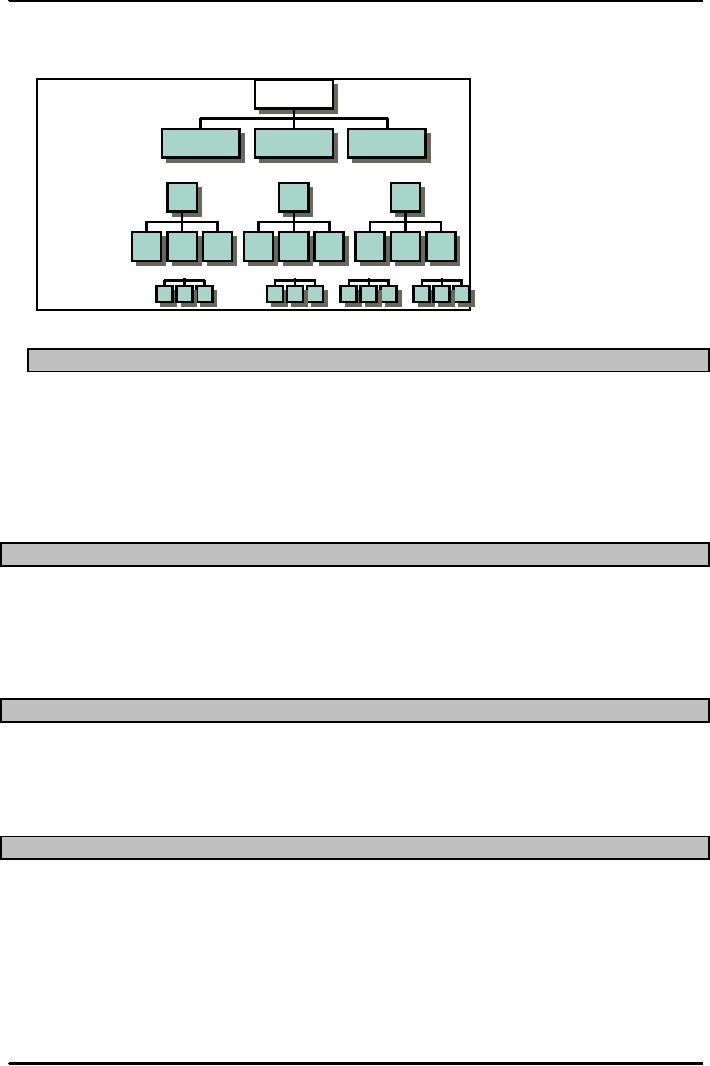 |

Production
and Operations Management
MGT613
VU
Lesson
43
PROJECT
MANAGEMENT
Learning
Objectives
After
completing our lectures 43 and 44, we
should be able to understand the
Behavioral aspects of
projects
in terms of project personnel and the
project manager. We should be able to
appreciate the
nature
and importance of work breakdown
structure in Project Management. We
should develop a
working
knowledge of PERT/CPM techniques.
Construct
simple network diagrams and try to
assimilate the kind of information that a
PERT or
CPM
analysis can provide. And last
but not the least we should
be able to analyze networks
with
probabilistic
times and describe activity "crashing"
and solve some problems.
Projects
Projects
are unique, one-time
(temporary) operations designed to accomplish a
specific set of
objectives
in a limited time frame.
This
property of being a temporary and a
one-time venture contrasts
with operations,
which
are permanent or semi-permanent ongoing
functional work to create the
same product or
service
over-and-over again.
The
management of these two
systems is often very
different and requires varying technical
skills
and
philosophy, hence requiring the
development of project
management
Project
Management
Project
Management is the organizing and managing
resources in such a way that
these resources
deliver
all the work required to complete a
project within defined
scope, time, and cost
constraints.
A
project is a temporary and
one-time endeavor undertaken to create a
unique product or service.
Distinguishing
characteristics of Project
Management
1.
How is it different?
Limited
time frame
Narrow
focus, specific objectives
Less
bureaucratic
2.
Why is it used?
Special
needs
Pressures
for new or improves products or
services
3.
Project Management has the
following important key
metrics
Time
Cost
Performance
objectives
Key
Success Factors
What
are the Key Success
Factors.
1.
Top-down commitment
2.
Having a capable project
manager
3.
Having time to plan
4.
Careful tracking and
control
5.
Good communications
Project
Management has certain major
administrative issues, such
as
1.
Executive responsibilities
2.
Project selection
3.
Project manager selection
4.
Organizational structure
196

Production
and Operations Management
MGT613
VU
5.
Organizational alternatives
6.
Manage within functional
unit
7.
Assign a coordinator
8.
Use a matrix organization
with a project leader
Project
Management normally involves the
knowledge of Project management
tools, Work
breakdown
structure, Network diagram, Gantt
charts and Risk
management.
Project
Management: Hospital
We
are given the task of
setting up a hospital facility in
our community. The plan is
to set up both
medicine
and surgery facilities related to all
important fields of medicine and
surgery. The project
Managers
are required to list the possible
activities in the form of
Planning
and Scheduling (Gantt Chart)
and Network Diagram AON and AOA
Activities
M
AP
M
JU
JU
A
SE
O
N
DE
Gantt
chart
A
R
AY
N
L
U
P
CT
O
C
Locate
new facilities
Interview
staff
Hire
and train
staff
Select
and order
Machinery
Remodel
and install
machines
Start
Attending Patient
Project
Management: Hospital Construction and
Operation Activities
include:
Locate
new facilities
Interview
staff
Hire
and train staff
Select
and order Machinery
Remodel
and install phones
Start
Patient Examination/startup
Network
Diagrams and Conventions
a
b
a
c
c
b
a
c
a
c
Dummy
b
activity
b
d
Project
Network Activity on
Arrow
197

Production
and Operations Management
MGT613
VU
Order
4
furnitur
Furniture
2
Locate
setup
facilitie
Remodel
1
5
6
Move
in
Intervie
Hire
and
train
3
Project
Network Activity on
Node
Order
furniture
Furniture
Locate
2
setup
facilities
6
1
Move
Remodel
In
5
S
7
Hire
and
Interview
train
4
3
Activity
on Arrow: The Network
diagram convention in which arrows
designate
activities.
Activity
on Node: The Network diagram
convention in which the nodes
designate
the
activities.
Activities:
Project steps that consume
or utilize resources (and or
time).
Events:
The starting and finishing of
activities designated by nodes in the
Activity
on
Arrow notation.
Path:
Sequence of activities that
leads from the starting node to the
finishing node
Critical
path: The longest path;
determines expected project
duration
Critical
activities: Activities on the critical
path
Slack:
Allowable slippage for path;
the difference the length of path and the
length
of
critical path
Critical
Slack
Path
Length
(weeks)
1-2-3-4-5-6
18
2
1-2-5-6
20
0
1-3-5-6
14
6
198

Production
and Operations Management
MGT613
VU
Project
Life Cycle
The
Project Life Cycle comprises
of a new concept idea for a
unique activity which is
then
evaluated
through feasibility reports, planned
with certain sequence of
activities, execution of
activities
and terminated after the
project has been completed
or shelved due to certain
unavoidable.
What
is important is to note that
all stages of Project Life
Cycle are administered and
handled by
competent
Project Management team or
Project Managers.
M
Feasibilit
A
N
A
Plannin
G
Concep
E
M
E
Executio
N
T
Terminatio
Planning
and Scheduling involves the
following key decisions:
Deciding
which projects to implement
Selecting
a project manager
Selecting
a project team
Planning
and designing the
project
Managing
and controlling project
resources
Deciding
if and when a project should be
terminated
Responsibilities
of a Project Manager
Project
Manager is normally considered responsible
for:
Project
Management
Responsible
for: Technical and Financial
Analysis
Project
Manager is normally considered to have
qualification such as
PMP
certification
CFM,
CFA and CFP
certification
Project
Manager should be skilled
enough to carryout or supervise the
calculation of
Financial
Evaluation and Investment
Analysis
Cost
Benefit Analysis
Project
Managers should be able to focus on
Ethical Issues and
avoid:
Temptation
to understate costs
Withhold
information
Misleading
status reports
Falsifying
records
Compromising
workers' safety
Approving
substandard work
Work
Breakdown Structure
A
project is different that operations due
to its unique nature. A good
project management practice
is
to breakdown the project into
sublevel or group of similar
activities. These sublevel or
group of
similar
activities is called Work
Breakdown Structure.
199

Production
and Operations Management
MGT613
VU
The
work breakdown structure usually
represents a Parent Child
Activity with
the
relationship between a parent and child
level being easily
identifiable. The work break
down
structure
allows a project manager to
incorporate more administrative control
over the project
activities.
Project
Level
1
Level
2
Level
3
Level
4
PERT
and CPM
PERT:
Program
Evaluation and Review
Technique
CPM:
Critical
Path Method
1.
Graphically
displays project
activities
2.
Estimates
how long the project will
take
3.
Indicates
most critical
activities
4.
Show
where delays will not affect
project
Advantages
of PERT
1.
Forces
managers to organize
2.
Provides
graphic display of
activities
3.
Identifies
4.
Critical
activities
5.
Slack
activities
Limitations
of PERT
1.
Important
activities may be
omitted
2.
Precedence
relationships may not be
correct
3.
Estimates
may include a fudge
factor
4.
May
focus solely on critical
path
Project
Scope and Scope Creep
Project
Scope refers to the total work
needed out of a project. The
primary tool required to
describe
Project
Scope is the Work Breakdown Structure.
Often projects suffer from an
irritant known as
scope
creep.
Scope creep is the unnecessary
extension of project scope
which does not allow the
project to be
completed
within budget and with in
the time limits. Organizations
incorporate special management
techniques
to isolate and eliminate
scope creep. Senior
Management is advised and trained by
outside
consultants
to avoid decisions which lead to
increase in business scope
creep or technical scope
creep.
Technical
Scope creep ( like Gold
plating) is the unfortunate tendency of
technical side to add
certain
avoidable
and costly features in their
products ( services or softwares) to make
their product or service
more
powerful and attractable to the
customers. Business Scope
creep (often called customer
pleasing)
200

Production
and Operations Management
MGT613
VU
is
the tendency of the business managers to
over do the customer relationship
with their customers.
A
pragmatic
strategy to avoid scope creep is to be
judicious to the original project
scope and religiously
avoid
uncalled for business or
technical additions that may
incorporate scope
creep.
Summary
We
learnt the Project Management
concept to be different and unique
from operations side. Operations
represent
a repetition of same activities
while projects represent execution of
unique activities.
However
there
exist similarities which
include administration of activities by
project manager in a similar
fashion
to
the activities performed by the operations manager. We
discussed the Network Diagrams, an
Hospital
example
Project in terms of Gantt
Chart, Work Breakdown Structure and
job responsibilities of a
Project
Manager.
201
Table of Contents:
- INTRODUCTION TO PRODUCTION AND OPERATIONS MANAGEMENT
- INTRODUCTION TO PRODUCTION AND OPERATIONS MANAGEMENT:Decision Making
- INTRODUCTION TO PRODUCTION AND OPERATIONS MANAGEMENT:Strategy
- INTRODUCTION TO PRODUCTION AND OPERATIONS MANAGEMENT:Service Delivery System
- INTRODUCTION TO PRODUCTION AND OPERATIONS MANAGEMENT:Productivity
- INTRODUCTION TO PRODUCTION AND OPERATIONS MANAGEMENT:The Decision Process
- INTRODUCTION TO PRODUCTION AND OPERATIONS MANAGEMENT:Demand Management
- Roadmap to the Lecture:Fundamental Types of Forecasts, Finer Classification of Forecasts
- Time Series Forecasts:Techniques for Averaging, Simple Moving Average Solution
- The formula for the moving average is:Exponential Smoothing Model, Common Nonlinear Trends
- The formula for the moving average is:Major factors in design strategy
- The formula for the moving average is:Standardization, Mass Customization
- The formula for the moving average is:DESIGN STRATEGIES
- The formula for the moving average is:Measuring Reliability, AVAILABILITY
- The formula for the moving average is:Learning Objectives, Capacity Planning
- The formula for the moving average is:Efficiency and Utilization, Evaluating Alternatives
- The formula for the moving average is:Evaluating Alternatives, Financial Analysis
- PROCESS SELECTION:Types of Operation, Intermittent Processing
- PROCESS SELECTION:Basic Layout Types, Advantages of Product Layout
- PROCESS SELECTION:Cellular Layouts, Facilities Layouts, Importance of Layout Decisions
- DESIGN OF WORK SYSTEMS:Job Design, Specialization, Methods Analysis
- LOCATION PLANNING AND ANALYSIS:MANAGING GLOBAL OPERATIONS, Regional Factors
- MANAGEMENT OF QUALITY:Dimensions of Quality, Examples of Service Quality
- SERVICE QUALITY:Moments of Truth, Perceived Service Quality, Service Gap Analysis
- TOTAL QUALITY MANAGEMENT:Determinants of Quality, Responsibility for Quality
- TQM QUALITY:Six Sigma Team, PROCESS IMPROVEMENT
- QUALITY CONTROL & QUALITY ASSURANCE:INSPECTION, Control Chart
- ACCEPTANCE SAMPLING:CHOOSING A PLAN, CONSUMERíS AND PRODUCERíS RISK
- AGGREGATE PLANNING:Demand and Capacity Options
- AGGREGATE PLANNING:Aggregate Planning Relationships, Master Scheduling
- INVENTORY MANAGEMENT:Objective of Inventory Control, Inventory Counting Systems
- INVENTORY MANAGEMENT:ABC Classification System, Cycle Counting
- INVENTORY MANAGEMENT:Economic Production Quantity Assumptions
- INVENTORY MANAGEMENT:Independent and Dependent Demand
- INVENTORY MANAGEMENT:Capacity Planning, Manufacturing Resource Planning
- JUST IN TIME PRODUCTION SYSTEMS:Organizational and Operational Strategies
- JUST IN TIME PRODUCTION SYSTEMS:Operational Benefits, Kanban Formula
- JUST IN TIME PRODUCTION SYSTEMS:Secondary Goals, Tiered Supplier Network
- SUPPLY CHAIN MANAGEMENT:Logistics, Distribution Requirements Planning
- SUPPLY CHAIN MANAGEMENT:Supply Chain Benefits and Drawbacks
- SCHEDULING:High-Volume Systems, Load Chart, Hungarian Method
- SEQUENCING:Assumptions to Priority Rules, Scheduling Service Operations
- PROJECT MANAGEMENT:Project Life Cycle, Work Breakdown Structure
- PROJECT MANAGEMENT:Computing Algorithm, Project Crashing, Risk Management
- Waiting Lines:Queuing Analysis, System Characteristics, Priority Model